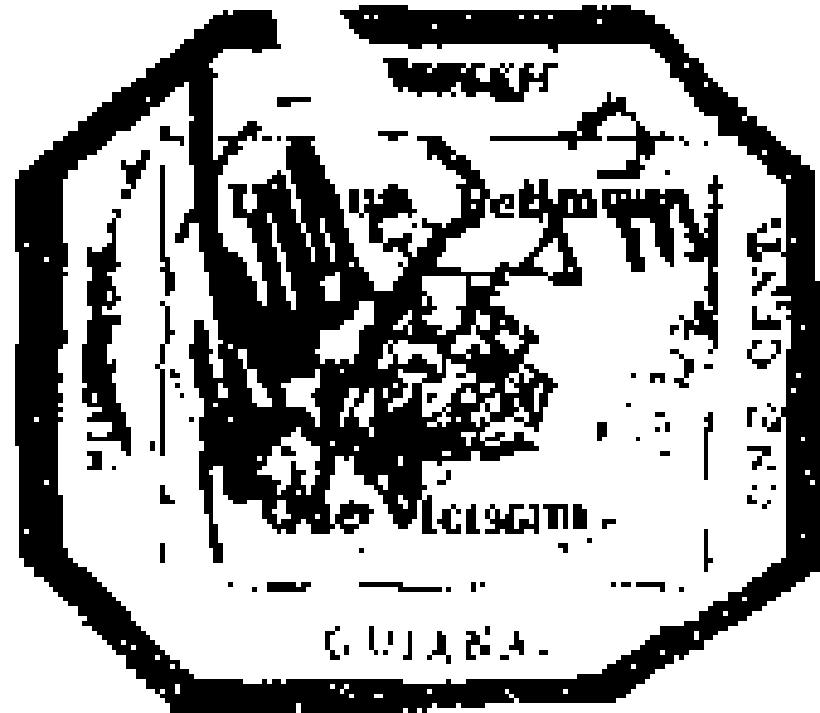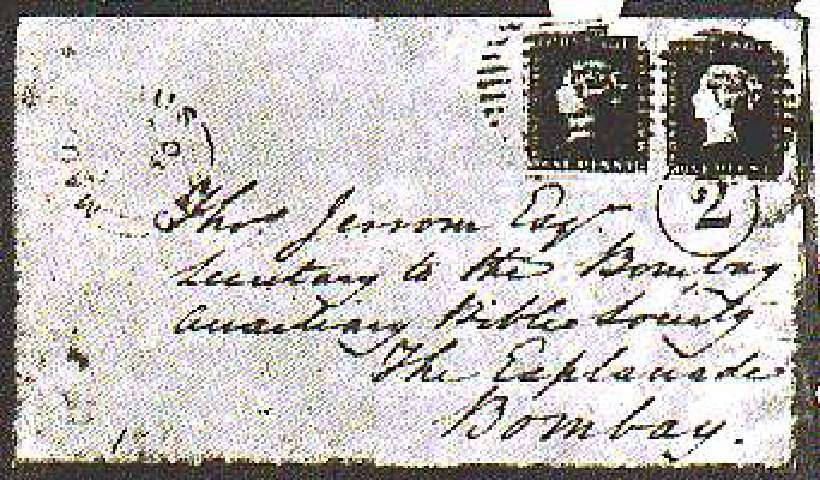Romance of Postage Stamps
Home / Non Fiction for Kids / Features for Kids / Romance of Postage Stamps
In earlier days the stamps of British Guiana were printed by a British printer, Waterlow & Sons. In 1856, the stock of stamps was exhausted but a fresh supply had failed to arrive. So the postmaster hurriedly had 4-cent stamps printed locally using the existing designs, the seal of the colony – a ship and the motto ‘Damus Petimusque Vicis sim’ (We give and we seek in turn). These new stamps were printed on magenta paper in black ink but the quality was so poor that the postmaster, to prevent forgery, asked the postal officials to initial each stamp before selling it.
Seven years later, a young British Guianese, L. Vernon Vaughan, who had just started collecting stamps, discovered among his family letters a ‘one-cent’ stamp with the initials of E.D. Wight. He did not know that by mistake one of the 4-cent stamps had been printed with the value of ‘one-cent’ and this stamp was in his possession. He soaked out the stamp and kept it in his album with his other stamps. The stamp was cut octagonally and was rather dirty. Vaughan decided to sell it to buy more attractive foreign stamps. With difficulty he persuaded a local collector N. R. McKinnon to buy it for 6 shillings (Rs. 6.40). He did not dream that the stamp which he sold for the small sum of 6 shillings would one day be priceless.
Five years later this stamp was sold again to a collector Thomas Ridpath of Liverpool for £120 (Rs. 2760). He resold it in the same year to the famous French stamp-collector, Phillip la Renotiere von Ferrary for £150 (Rs. 3400). Word spread of the rarity of this stamp. After Ferrary’s death in 1917, his collections were sold by auction at Paris between 1921 and 1925. In 1922, in one of the sales this ‘one-cent’ British Guiana was bought by an American, Arthur Hind for £ 7343 (Rs.168886).

Arthur Hind died in 1933 and left his stamp-collection as a part of his estate. His widow, however, claimed that the ‘one-cent’ British Guiana had been given to her by her husband. She won her case and in 1940, the stamp was sold for $40,000 (Rs. 5,20, 000) to an Australian collector who chose to remain anonymous.
In 1970 the stamp was again auctioned in New York and Mr. Irwin Weinberg and his syndicate purchased it at the astronomical price of $2, 80, 000 (Rs. 34, 60, 000). It was while the stamp was in the possession of the syndicate that Mr. Irwin Weinberg brought it to New Delhi to display it at the International Stamp Exhibition, India ’80 in January. Three months after this the stamp was auctioned in New York and was sold to an anonymous collector for $8, 50, 000 (Rs. 1, 10, 50, 000)
The postal system has been in existence in India since 1296. The Pathan ruler, Alauddin Khilji, had a horse-and-foot postal organisation to receive regular news of the condition and progress of his army. This system was greatly improved during the time of Sher Shah who only reigned for a short time (1541 to 1545). During these five years he built a 2,000-mile road from Bengal to Sind and constructed sarais along the roads. He established horse despatches. A further development in the means of transport occurred during the reign of Akbar (1156 to 1605) when camels were used in addition to horses. History also tells of Raja Chikka Deva of Mysore who organised a regular postal service throughout his dominion in 1672.
The next constructive step was taken by the East India Company who had spread their activities to Madras, Bombay and Calcutta by 1688. A regular exchange of correspondence was necessary, so the East India Company established major post offices at Bombay and Madras, and smaller ones at various places to receive and despatch letters. Lord Clive improved the postal system in 1766, although it was reserved for government use only. It was thrown open to the public in 1774. At that time, the lowest rate of letter postage was 2 annas for every 100 miles. To facilitate the payment of postage a special copper token of the value of 2 annas was struck by the mint.
Postage had to be paid at the time of posting the letters at the post offices. On payment of postage in cash the letters were cancelled or defaced with the words ‘Post Paid’, or ‘Full Post Paid’, etc. Letters for which postage had not been paid were also accepted and such letters were defaced with the words ‘Bearing’ or ‘Post Not Paid’ or Unpaid’. The postage fee on such letters was recovered form the addressee.

Birth of the Postage Stamp
…Till the postage stamp was introduced, postage on letters was either pre-paid in cash by the sender or collected from the person to whom the letter was delivered The cost was calculated according to the distance the letter had travelled. Letters were defaced with different kinds of stamps to indicate whether postage had been paid or not. As envelopes had not then been invented, a letter sent by post was just folded, sealed and addressed on the back. However, even with various improvements the system failed to meet the demand of the public for an efficient and cheap service.
In 1835; Rowland Hill began to study the tax situation in England. He found that postal revenues were falling in spite of increased rates. His study also revealed that most letters were sent unpaid and many were refused by the addressees. An interesting story told to Rowland Hill illustrates how the postal service was misused.
One day when a young gentleman was out walking, he saw a postman take a letter to a woman who lived in a very humble cottage. The postman demanded I shilling for the letter but the woman shook her head sadly and returned the letter unopened. Thinking that the poor woman could not afford to pay for her letter, the young gentleman stepped forward and generously gave the required shilling, despite the woman’s protests.
As soon as the postman was out of the sight she told him that he should not have wasted his money and opening the letter showed him that it was only a blank sheet of paper. She then explained that it was from her son who used this method, which did not cost either of them anything, to inform her that he was well.
Owing to the high rates of postage, many people tried to use the service without paying for it….
…The first Indian pictorial stamp was issued in 1931 on the occasion of the inauguration of New Delhi. These stamps depicted scenes and landmarks of New Delhi. The next occasion when commemorative stamps were issued was the Silver Jubilee of King George V in 1935. In 1937, stamps with pictures showing the various aspects of carrying mail were issued. To commemorate the end of World War II a special issue of four stamps was brought out in 1946.
Since Independence, India has issued several definitive and commemorative series of stamps portraying various aspects of its life and culture. These have depicted our wildlife, religions, themes connected with our Five Year Plans, our ancient architecture, social and educational themes connected with children, historical events, the conquest of Mt Everest, etc. National leaders and freedom fighters, philosophers and thinkers, educationists and scientists, writers and artists, have also been similarly honoured. To make the stamps more attractive and colourful, a multi-colour printing machine was installed at the Nasik Security Press in March 1972. India is now bringing out colourful stamps in series like Indian Masks, Indian Miniature Paintings, Indian Dances, etc. This is another landmark in the history of stamps in India. There are two other landmarks which are worth remembering.
India was also the first country to fly mail. This was on 18 February 1911 when 6, 500 letters and postcards were flown from Allahabad to Naini. India was the first country in the Commonwealth to issue a special set of airmail stamps. This was in 1929.
First published by National Book Trust, India
1367 words |
14 minutes
Readability:
Grade 7 (12-13 year old children)
Based on Flesch–Kincaid readability scores
Filed under: features
Tags: #india, #indians, #british, #letters, #stamps, #postman
You may also be interested in these:
The Telegraph
Gems of Indian Literature
A Soldier's Death is a Soldier's Death
Indians: Masters of Junk
AHA! Books: Arvind Gupta